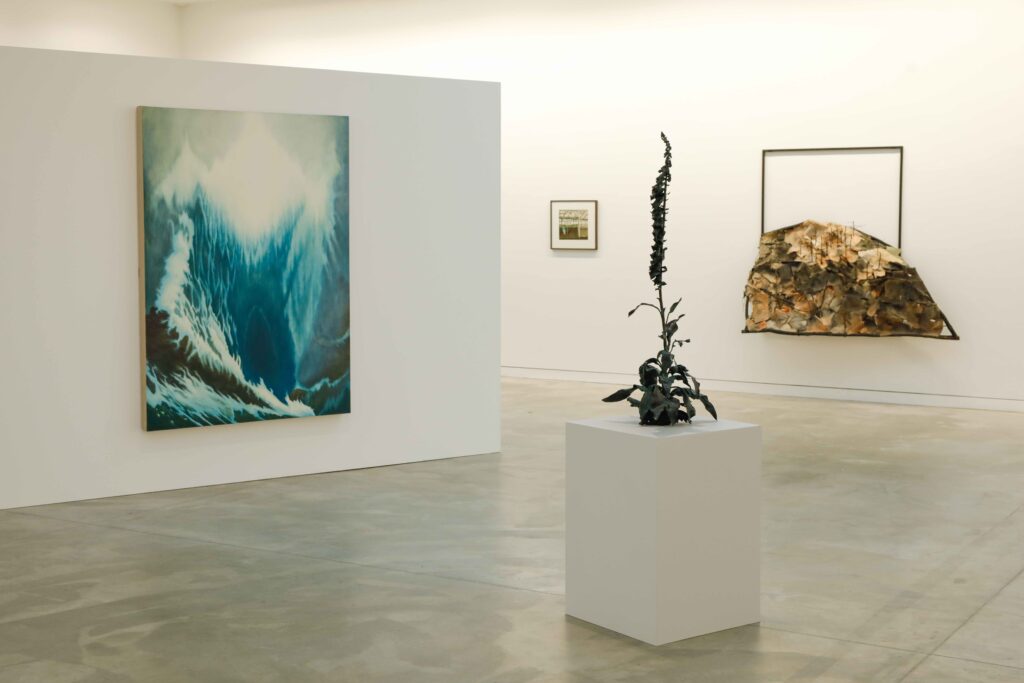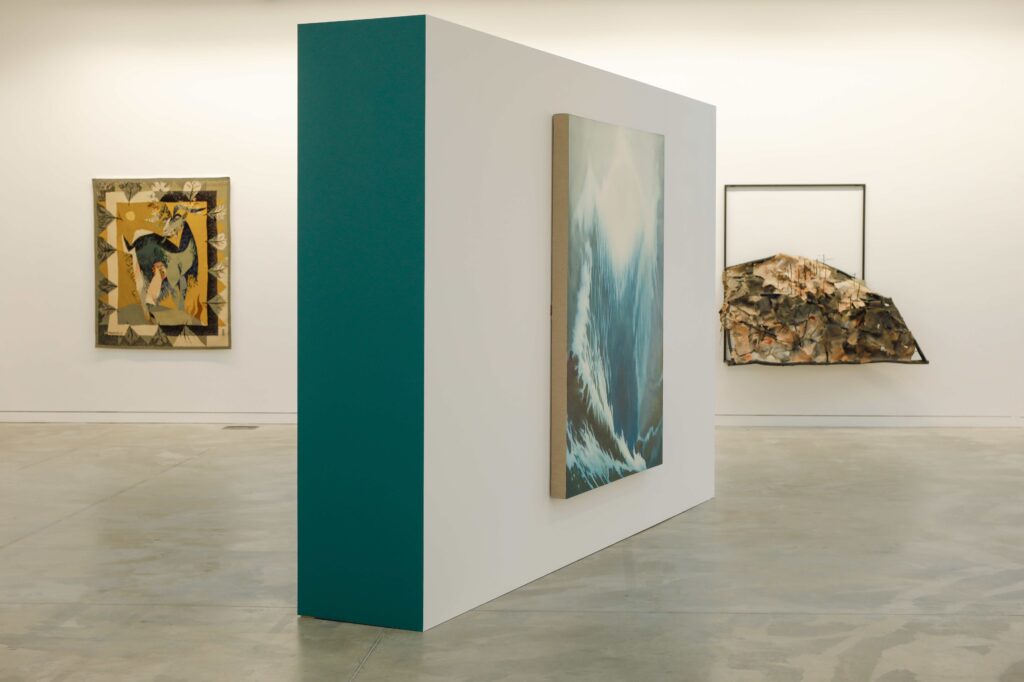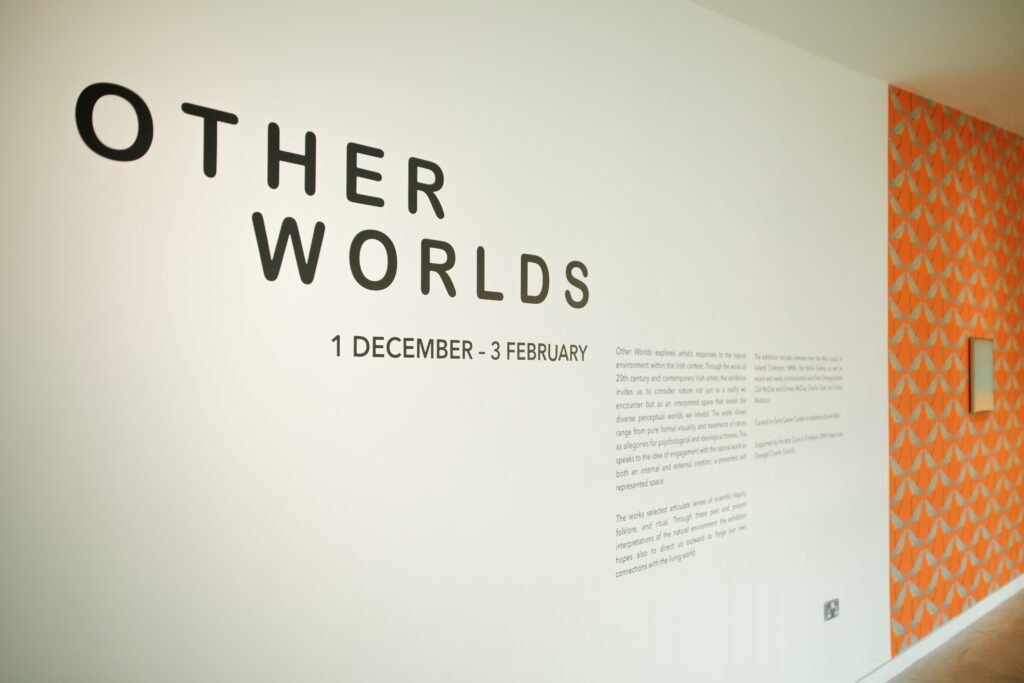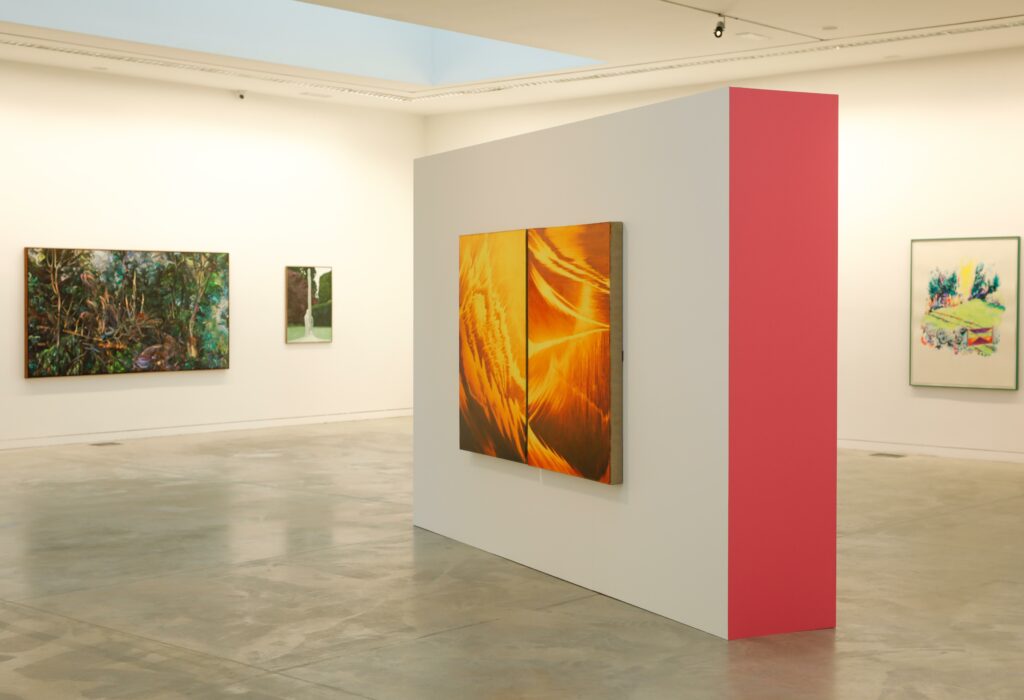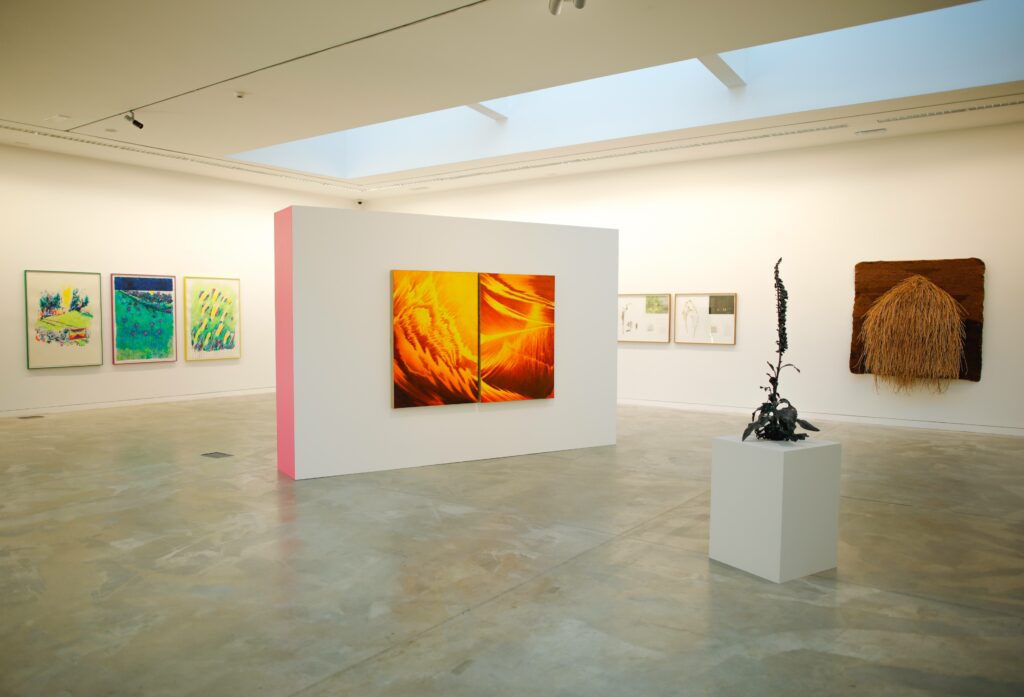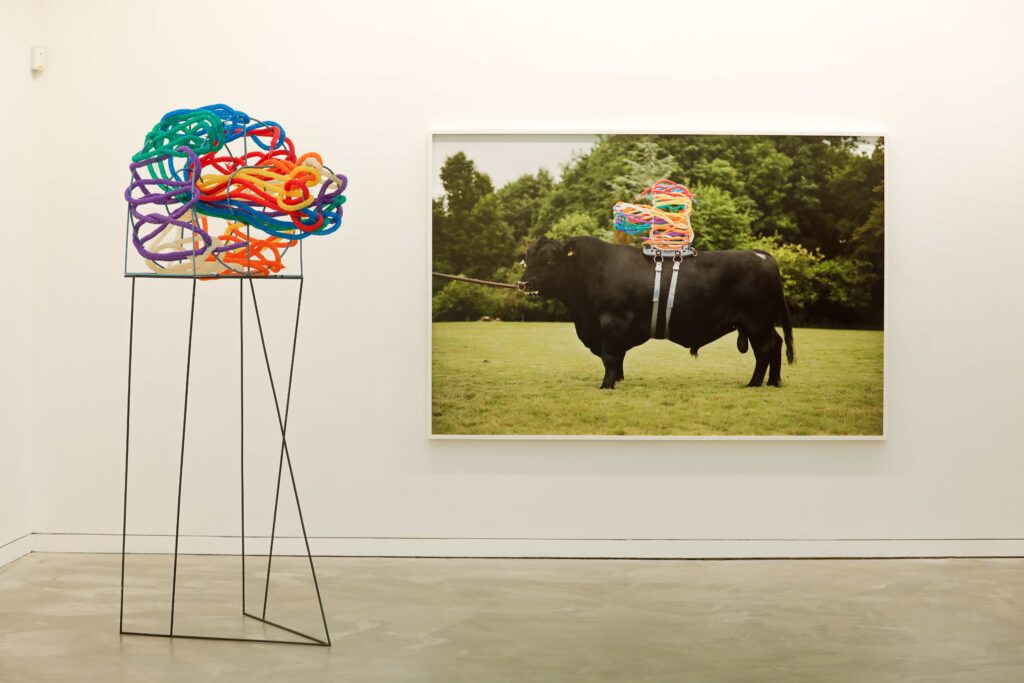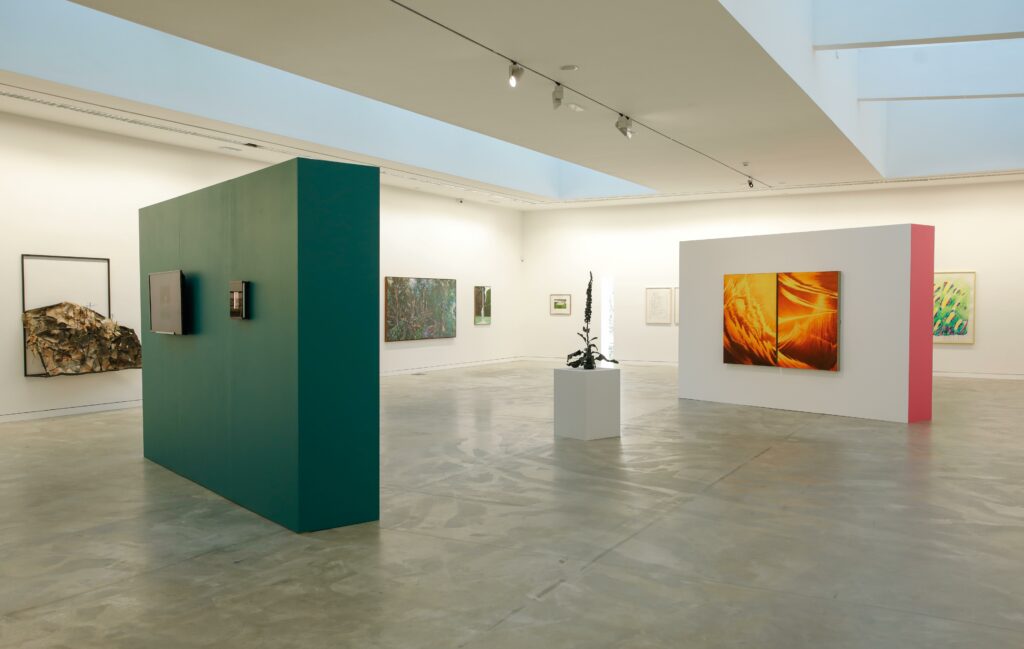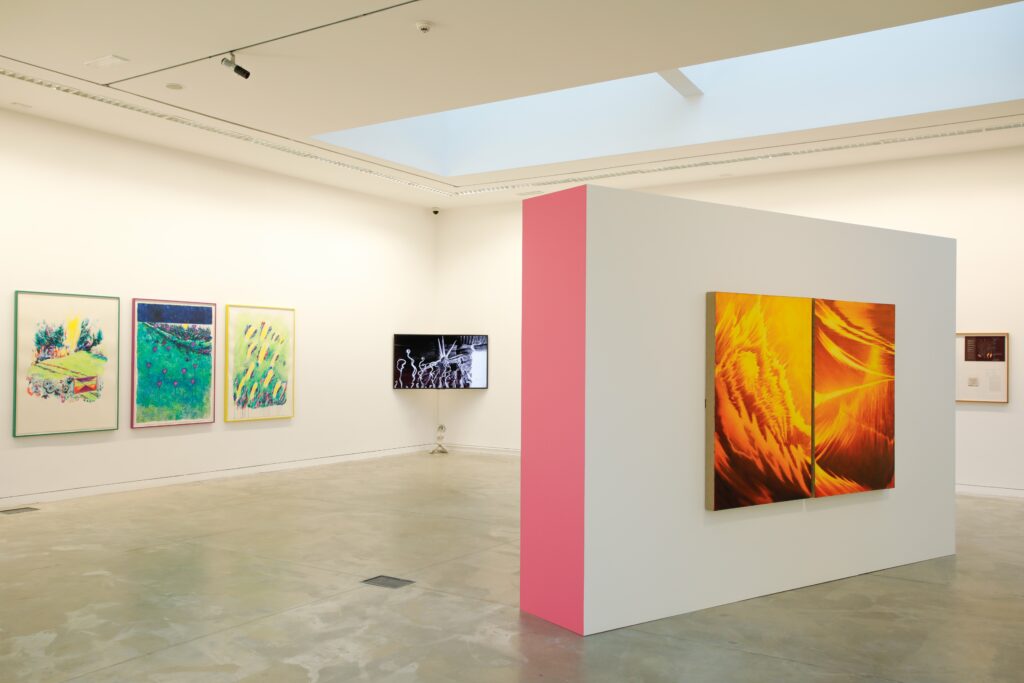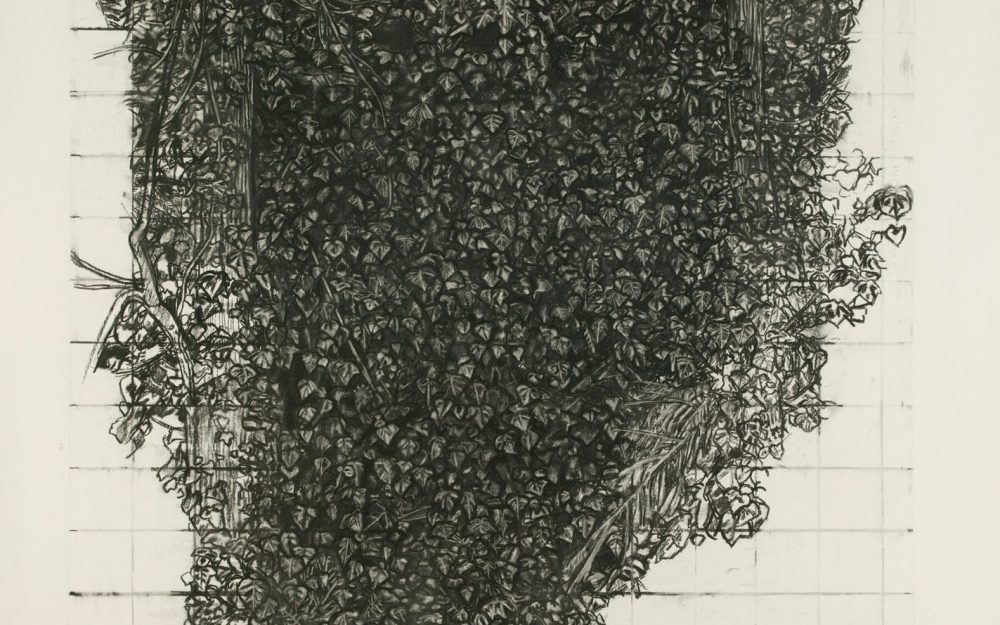Porn Foliage – Gary Coyle
We live on a small island, and Irish artists inhabit a smaller island within our familiar coastline. In 1989, the artist Gary Coyle halted me one lunchtime in the concourse of the National College of Art & Design, at the top of the stairs leading down to the lively canteen. Opposite us hung a large charcoal drawing of mine, depicting Elvis Presley in some sort of cavernous afterlife, arm raised mid-jive, spirits emanating from a ghostly gramophone. Emanating from Coyle were words of effusive praise for this effort. I mumbled my thanks and shuffled down to lunch, embarrassed both by my drawing and poor skills as a conversationalist. Those few moments have stayed with me, however, illustrative of the great passion certain people carry for art. On that long-ago afternoon, I didn’t know Coyle beyond nodding terms; he was several student years ahead of me, and in the Sculpture department, while I was struggling to find my feet in Painting. Thanks to my abysmal interpersonal abilities, I never got to know Coyle, although he would know who I am, and vice versa. Yet I have carried a small parcel of admiration for this artist across three decades. So, when I was kindly invited to respond to a single work in the astonishing Other Worlds exhibition and found myself halted as vigorously by Coyle’s Porn Foliage charcoal as I was by the artist himself, all those years ago, near my Elvis charcoal, it seemed inevitable that I might try to pick up this charcoal conversation after 35 years.
One of the pleasures of working with charcoal is that the artist enters a dialogue across stretches of time so vast that 35 years scarcely registers as a blink. The cave painters of Niaux, magicking ibex and bison onto long-hidden walls during the Magdalenian period of the Upper Palaeolithic Age, most likely used charred sticks from a fire, rather than intentionally made charcoal. Life itself spilled from such ancient fires. I cannot hold a stick of charcoal without acknowledging that art is so fundamental to our species that the first artists plucked their tools from early flames. Coyle, a charcoal maestro equally at home with the tools of our serpentine technological fires, as evinced by artworks he has created using a Wacom tablet, I imagine running zestfully along the tunnels of time, chewing the fat with spirits, one moment Hiroshige, the next a shadowy cave presence.
‘Each picture has its own history,’ remarked Frank Auerbach, an artist whose studio floor, buried inches-deep under deposits of dried paint and accumulated charcoal dust, attests to this truth. Auerbach’s method involves endlessly scraping off dense paint, and a similar process clearly has a hand in his drawings, as the thick paper frequently requires patches. Coyle works on paper of comparable thickness. Likewise, his sheets become sites of intense activity for the duration of each drawing’s creation. Coyle’s process of redaction sees him rubbing out the work in progress as many as forty times, building and destroying, building and destroying. Fascinatingly, the Wacom tablet images undergo the same procedure, and Coyle has spoken of how stray pixels are left behind, surviving the latest onslaught of erasure, much as charcoal marks or impressions elude the rubber. Standing before Porn Foliage in the Regional Cultural Centre, the first thing one notices, simultaneously to one’s appraisal of the fine draughtsmanship amid the titular foliage, is that the artist has chosen to leave visible the grid used to square up the image. This feels a little like constructing a beautiful building and electing to leave the scaffolding standing for all time. Pure Coyle. This is a drawing, he seems to say, not some flimsy facsimile of dubious reality. Here have I laboured. From such building sites does the beauty of art grow.
Cornelius Browne
Born in Glasgow in 1968, Cornelius Browne grew up near the small coastal village of Maghery in West Donegal, where he still lives and paints. He studied painting at the National College of Art & Design in Dublin, graduating with a degree in Fine Art. He worked for many years at the Irish Museum of Modern Art. In recent years, he has had two solo exhibitions, Weathering and An Invite to Eternity, at the McKenna Gallery in Omagh. His paintings have also been exhibited in many group exhibitions around Ireland. Since 2016, he has tutored plein air workshops at Glebe House & Gallery in Churchill, and last summer he tutored the closing workshop of the Dublin Plein Air Festival. He has worked in film as a production designer and screenwriter and has published fiction and poetry. For the last four years, he has written a column for The Visual Artists’ News Sheet, published by Visual Artists Ireland. He is currently working on his first book.
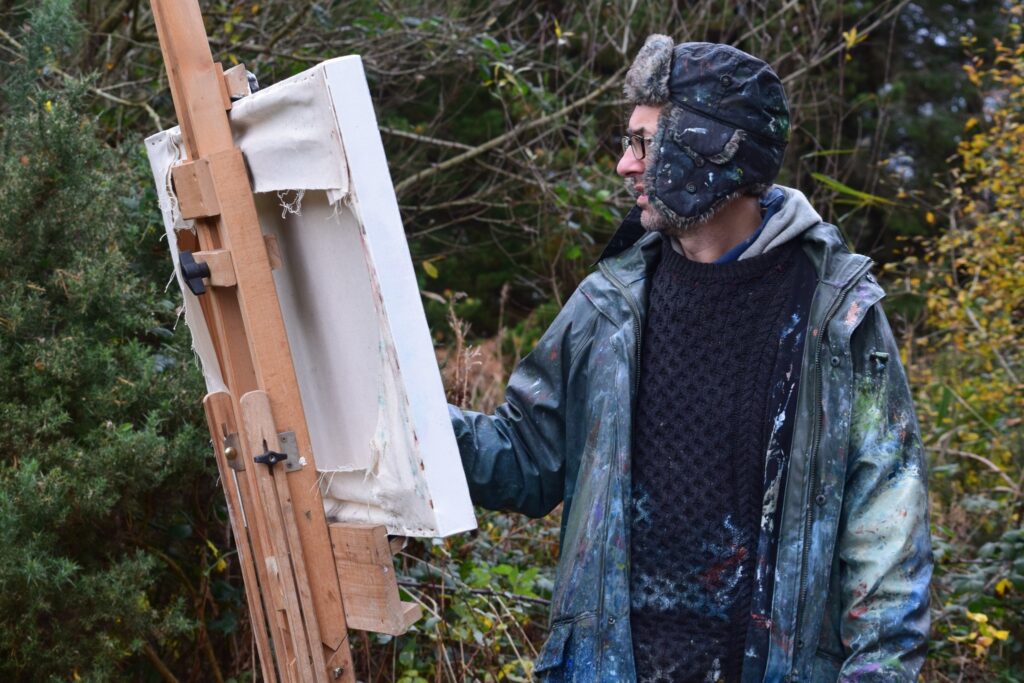
Other Worlds explores artistic responses to the natural environment within the Irish context. Through the works of 20th-century and contemporary Irish artists, the exhibition invites us to consider nature not just as a reality we encounter but as an interpreted space that reveals the diverse perceptual worlds we inhabit. The works shown range from pure formal visuality, and treatments of nature as allegories for psychological and ideological themes. This speaks to the idea of engagement with the natural world as both an internal and external creation; a presented and represented space.
The works selected articulate lenses of scientific inquiry, folklore, and ritual. Through these past and present interpretations of the natural environment, the exhibition hopes also to direct us outward to forge our own connections with the living world.
The exhibition includes artworks from the Arts Council of Ireland Collection by Richard Ashrowan, Barrie Cooke, Laura Fitzgerald, Martin Gale, Tom Haran, Sandra Johnston, Vera Klute, Louis le Brocquy, Christine Mackey, Theresa McKenna, Aileen McKeogh, William McKeown, Maria McKinney, Miriam O’Connor, Tony O’Shea, Alan Phelan, Bennie Reilly, and Nigel Rolfe; Gary Coyle, Martin Gale, and Caroline McCarthy from the IMMA Collection; Dorothy Cross from the Kerlin Gallery; as well as recent and newly commissioned work from Donegal artists Cáit McClay and Éiméar McClay, Charlie Scott, and Celina Muldoon.
1 December – 2 February
Curated by Early Career Curator in residence Daniel Nelis.
